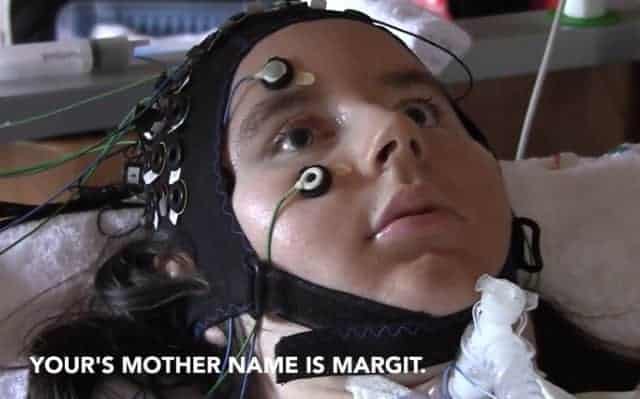Imagine being trapped inside your body, unable to move at all, but having complete self-awareness of the things happening around you, with your mind fully functioning. This is the case of many patients with “locked-in syndrome”. Locked-in syndrome is considered mental awareness while your body is completely paralyzed beyond eye movement and blinking.
When blinking is also compromised, it’s considered being completely paralyzed. Being unable to communicate in any way, even if it’s with blinking, makes the patient altogether trapped inside themselves and unable to communicate even the simplest of yes or no answers. However, a new device and study brings warmth and hope to those being completely paralyzed, as well as their family and loved ones.
Four patients suffering from ALS and complete locked-in syndrome took part in a recent study, where they were wired up to a non-invasive BCI (brain computer interface). The BCI was able to detect even the subtlest of changes in blood-oxygen levels within the brain, which allowed the patients to communicate with doctors and scientists after being asked simple questions.
“We were initially surprised at the positive responses when we questioned the four completely paralyzed participants about their quality of life…” – Professor Niels Birbaumer
They were able to calibrate the program by asking questions that the patients already knew the answers to, such as confirming the names of their husbands or mothers, so that the program would show what a ‘yes’ or ‘no’ answer would look like on the BCI.
All four patients were able to answer personal questions that were asked of them with just the use of their thoughts, proving that they were still mentally aware of the world around them.
The technology used in this particular study also has a broader application. If it becomes more available to patients, it could possibly be used to treat an entire range of neuro-disorders that leave patients unable to communicate – not just those who experience complete-locked in syndrome. Professor John Donoghue, who is the direction of the Wyss Center for Bio and Neuroengineering, claims that being able to resort communication for those who experience complete locked-in syndrome is one of the first steps for the patients to be able to regain movement.
Professor John Donoghue, who is the direction of the Wyss Center for Bio and Neuroengineering, claims that being able to resort communication for those who experience complete locked-in syndrome is one of the first steps for the patients to be able to regain movement.
This groundbreaking experiment allowed patients who had lost all ability to communicate the chance to connect with the world around them. Kirsten Wirth, a 26-year-old woman who had been diagnosed with juvenile ALS, had succumbed to complete locked-in syndrome after only four years. With the help of the new technology, Kirsten was able to confirm her mother’s name, Margit, and was able to communicate that she was happy with her life, despite the extenuating circumstances.
It wasn’t just Kirsten who reported general happiness in her life. With amazement and hope, researchers discovered that all of the study patients reported that they felt happy most of the time.
It was found that when the patient’s basic needs were met, and their quality of life was good and consistent, they reported a level of happiness in their lives that extended to most of the time.
Another patient was asked if he would allow his daughter to marry her boyfriend. Amusingly, the answer was “no” nine times out of ten. The results of this study are turning all the previous theories of complete locked-in syndrome on their heads. Communication is part of the human experience.
Despite their circumstances, these patients could find the good in life and were pleased to communicate this to researchers and their family and loved ones who had been denied the ability to communicate with them for so long.
This new technology allows for patients who are unable to communicate in any way to do so and allows them to connect with the world around them once more.
While they report that their lives are happy as is, imagine how much more they will be able to get out of life with the invention of this new technology.













 Community
Community

